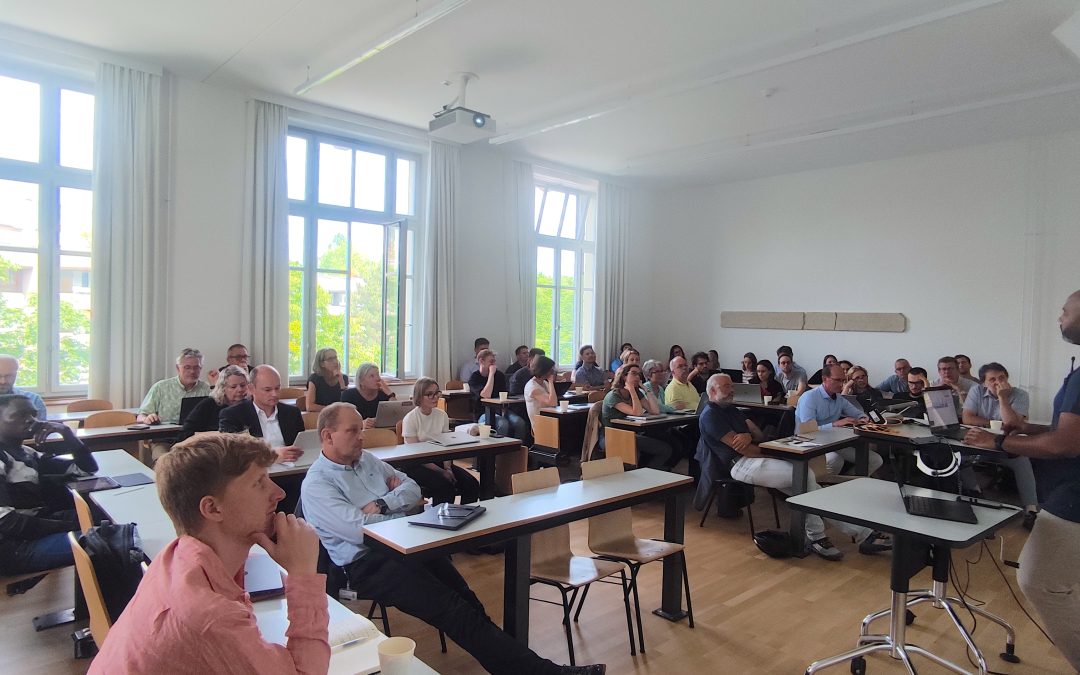The SPSP Annual Meeting was held on 10th June in Bern. There were 55 participants from 15 institutions joining the SPSP annual meeting 2025, of which 49 attending on site and 6 online. The federal administration was particularly well represented, with 5 members from the Federal Office of Public Health, 3 from the Federal Food Safety and Veterinary Office, 3 from the Institute of Virology and Immunology, and 3 from Agroscope. This year also exhibited a special guest from the European Food Safety Agency (EFSA) in the person of Mirko Rossi, Scientific Officer at the EFSA, who presented the EFSA Whole Genome Sequencing System and upcoming obligations for Switzerland. Read the SIB news!
General updates: SPSP major achievements over the last year
During the first session, those actively involved in the technical development of SPSP presented the major milestones that were achieved throughout the last year such as:
- The launch of a fully refactored, more intuitive SPSP website to increase our visibility by reaching a broader audience and providing all the documentation in one place.
- SPSP also launched a new Private Portal with a fully refactored IT infrastructure currently available for the bacteria instance running the IMMense pipeline developed by the institute for medical microbiology at the University of Zürich.
- The SPSP Public Portal was extended to include data on Influenza and RSV, featuring also phylogeny visualizations with Auspice (nextstrain).
- Finally, additional QC and analysis pipelines were integrated with SPSP, notably
V-pipe for SARS-CoV-2 assembly, a tool developed at ETHZ and SIB.
Panel discussion
All the participants were invited to reflect on a few questions ahead of the meeting, notably to feed the panel discussion. Shared thoughts and ideas are available on the SPSP website: https://spsp.ch/spsp-annual-meeting-2025-panel-discussion/.
The panel discussion started with a question on how to incentivize more data submissions. The main take-home comments and suggestions are detailed below.
Define use cases to increase usage of the Private Portal and thereby incentivize data submissions. Throughout the discussions, the need to consider various use cases with their specific constrains and requirements was often eluded to. This highlighted the need to explain how (and for what) the Private Portal may be used, and what it can bring for its different users.
=> Action 1: We will organize various use-case meetings in the coming year to clarify feature needs and increase the platform’s impact (this process is already ongoing with the Federal Office of Public Health and the Federal Food Safety and Veterinary Office).
=> Action 2: We will provide more information on the website about the need for a platform like SPSP and share success stories (or examples where having SPSP would have made a difference, had it been available).
Importance of clarifying data access levels and information flow to nurture trust. Overall, many participants expressed the need for better understanding what data is accessed and shared, and who is notified of what (information flow). This relates to clarifying overall responsibilities and what we offer as a platform.
=> Action 3: We will document the data and information flow on the SPSP website to clarify which metadata are visible and to whom, which metadata are shared, and what actions are triggered along the flow. Note: this will be a continuous process, as for some use cases the information flow is not yet fully established and will be discussed during the use-case meetings (e.g., in cases of suspected foodborne outbreaks). Where possible, expected timelines will be indicated.
Have an easy and low effort way to upload data is key to keep people involved. Minimal mandatory metadata is good. Currently, SPSP submissions rely on SendCrypt, which is very easy to use once set up and can be used both on the command line or via a user-friendly graphical interface (we acknowledge that the setup requires IT intervention for IP whitelisting and sometimes, port authorization, which might delay initial setup).
=> Action 4: We will investigate and discuss internally additional submission routes that may further simplify data submission, if at all possible given the constraint that we process sensitive data.
=> Action 5: While data processing is automatic if metadata are loaded without triggering any errors, we acknowledge that the follow-up of problematic submissions can be improved and expedited (mainly due to limited manpower, as the budget for curation is often very small). Despite this, the general responsiveness and close engagement of the SPSP Support team are greatly appreciated and have been praised.
Clarify the process for withdrawing data from the system. During the meeting, we explained that a Standard Operating Procedure (SOP) already exists to address data access and withdrawal requests.
=> Action 6: The SOP will be documented on the SPSP website.
